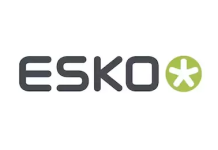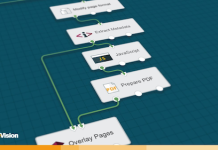As part of the buildup prior to the launch of the Institute For Futures Research report, Printing SA, the South African Typographical Union (SATU) and Federation Of Unions of South Africa (FEDUSA), hosted a press briefing that was live streamed on Facebook on 2 August at The Manhattan Hotel in Pretoria.
Printing SA CEO Dr Abdool Majid Mahomed, SATU General Secretary Edward de Klerk and FEDUSA training officer Boni Mbewana gave a joint official statement on a number of issues concerning the parties, pertaining particularly to the apparent apathy being shown to the parties’ requests for an audience with the President or members of his executive as directed by the Presidency.
‘To our shock and disbelief, attempts at securing this engagement with namely the Honourable Minister of Communications Stella Ndabeni-Abrahams have come to nought with her office advising us that neither herself or the Deputy Minister will be available to attend the Presidential Summit in September 2019 due to other commitments overseas.
‘This has also been the case with various ministries whose work affects our industry. We have sent formal letters of invitation with a synopsis of the summit and the proposed programme and topics for discussion to the Minister of the Department of Trade and Industry, Ebrahim Patel, Deputy Minister of Economic Development, Nomalungelo Gina, Minister of Department of Labour, Thulas Nxesi and the MEC for Education in Gauteng, Panyaza Lesufi.’
Dr. Mahomed expanded on the importance of Printing SA’s upcoming sixth annual conference, stating that it is an ideal opportunity for players in the printing, packaging and signage industry to engage with both government and the private sector. The event will take place on 11 and 12 September at the Gallagher Convention Centre, Midrand, Gauteng, in conjunction with the Africa Print, Sign Africa, FESPA Africa, Africa LED and Modern Marketing Expos.
Institute for Futures Research (IFR) Report
The release of the report is the result of collaboration between the Union as well as Printing SA. This report has given the Union a clearer perspective on the future of the printing sector in South Africa. The wait for government to provide certainty and direction to the industry has now reached a point where, if as a nation this is allowed to continue, South Africa faces serious issues.
SATU thanked the Fibre Processing and Manufacturing SETA for their support in ensuring this research was possible. Mbewana thanked SATU for its assistance in the development of the upcoming research report.
11 plausible assumptions about the sector’s future
There are a number of important factors that contribute to the shaping of the printing, packaging and signage sector. These include rapidly changing consumer values and purchasing behaviour, tightening regulation, new paradigms around sustainability and rapid technological changes.
New market pressures had a major impact on the global manufacturers of printing machines and supplies. Increased levels of change and competitiveness resulted in market consolidation across sectors and segments; this has seen companies such as HP, Xerox and Lexmark reform and refocus on their traditional print business, while vendors such as Konica Minolta, Ricoh and Sharp expanded their IT services businesses.
The following assumptions are likely to hold true over the next ten year horizon:
1. Advanced technologies increase the value-add of printing
The next age of printing could be defined photonic printing and conductive inks. Photonics is the ‘science of light or photon generation, detection and control’. It is currently applied by companies hoping to develop new, innovative and invisible photonic printing techniques. This technology will address the luxury goods counterfeiting issues raised earlier and become invaluable for identification and watermarking purposes. It will also assist with communication by enabling steganography – the practice of hiding messages or information within readable text or visible images.
2. The digital and physical printing worlds merge – resulting in new technology partnerships
As networked printers and multi-functional printers increasingly contribute to the connected world, print manufacturers could increase their participation in broader industry ecosystems and increasingly partner with technology companies, creating broader and more diverse partner ecosystems. This could contribute to new, secure and innovative technologies for innovative printing industry products, business models and sales channels.
3. Increased pressure for sustainability/eco-consciousness
The trend of people becoming more aware of sustainability issues will undoubtedly continue to grow, with people increasingly censoring their own behaviour and becoming more and more critical of reckless consumption. As this trend accelerates, we will increasingly see market regulations tightening against harmful practices around the world.
New legislation will favour more environmentally sustainable printing practices. This will include recycling and remanufacturing of printer cartridges and paper products to divert unwanted paper, plastic, metal and chemicals away from waste dumps. The impact of chemicals contained within inks will become an issue and we will see a return to more natural bio-degradable alternatives. The production of sophisticated ink products, gentler to the environment, will become a focus area, especially vegetable-oil based inks and ultraviolet-curable inks. These will increasingly be favoured over traditional, environmentally polluting solvent-based inks. Food-safe inks will increasingly be developed for the food and beverage industry.
4. Predictive analytics come to the forefront
Big data has long been used to support proactive service and maintenance offerings. In future, printing companies could use predictive analytics, and a range of associated techniques – including data mining, modelling and Artificial Intelligence – to optimise products and services.
5. Increased application of intelligent, connected printers (MFPs)
Smart manufacturers could help customers improve productivity and efficiency, introducing enhancements benefitting manufacturers, end-users and consumers. These will include proactive services such as failure prediction and reducing the frequency of unscheduled downtime. It will also integrate workflow apps to simplify the move from paper-based to digital processes.
6. Cybersecurity becomes an increasingly important issue
As printing operations become increasingly inter-connected, they will become more vulnerable to cyber-attacks. This will mean that producers of equipment will start to invest more in machine learning to better protect their print devices. This will become more and more challenging as printing provides a much broader surface for attack as legacy systems and technologies become increasingly outdated. The key defence against attacks will be authentication and intrusion detection, but these will not be a ‘silver bullet’ for print security as rules-based intrusion detection will not be able to detect all emerging threats. This risk may only be mitigated through machine learning algorithms and anomaly detection, which will enable threats to be detected in real time.
7. Players in the industry deepen their software and technology competencies
Print manufacturers will increasingly need to differentiate themselves through software innovation and increased product speed to market, not just in terms of reduced cost or improved hardware design. As businesses accelerate the digitisation of paper-based processes, software / technology expertise will become one of the most important differentiators for industry players. With product value increasingly defined by technology, manufacturers will need to align their competencies and connected processes in order to address challenges such as cybersecurity and data privacy. This means that they will need to develop new capabilities in areas such as digital workflow and augmented reality (AR) for print.
8. Business models shift to incorporate additional value-added services
Business to Business (B2B) customers as well as Business to Consumer (B2C) customers are increasingly demanding an integrated service and solution offering ranging from design and final production to stock-holding and distribution, incorporating elements of tangible products with embedded technologies. Beyond finished printed products, customers are requiring add-ons that include account management services, optimised budgets and overall project management.
9. Voice recognition continue to advance in sophistication and utility
Voice assistants for printers are new and emerging forms of technology. Sharp has integrated its products with Amazon’s Alexa for Business, a virtual assistant that connects Amazon Echo devices. Other products, such as Nuance’s Voice Biometrics, offer robust authentication.
10. Augmented Reality (AR) + Print = the whole is more than the sum of the parts
The direction is toward the integration of media. This means that any printed materials will provide additional content in association with a camera algorithm that recognises the content on a page and enables the retrieval of digital data associated with it. This will provide a richer experience than what is possible with paper and digital content separately.
11. Printing on anything, anywhere, anytime
New forms of printing could enable real-time printing on any surface, anywhere, anytime by ordinary people – without having to pre-order from a supplier. You can print your own pizza boxes on demand!
Update as of 6 August:
1. The FEDUSA President and Secretary General Riefdah Ajam engaged Minister Ebrahim Patel of the DTI at the Presidential Jobs Committee, specifically on the crisis in the printing sector. The minister has given a formal undertaking to engage with FEDUSA and SATU as a priority and has mandated Deputy Minister Gcina and the DG, Lionel October, to be part of the intervention. The same modus operandi extended to the clothing, leather and footwear sectors will be now fast tracked for printing.
2. Minister Nxesi and his Deputy equally are keen to engage the overall crisis in the labour sector, following the meeting in Parliament that SATU was present at.
3. Further engagement with both ministers is ongoing to try and have them be part of FEDUSA’s next NEC Meeting.





















